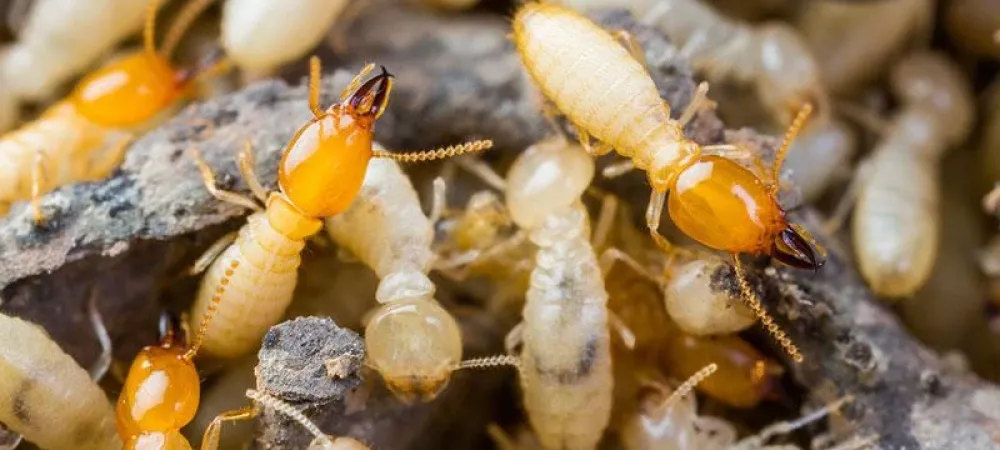Termites in Arkansas: What Every Homeowner Needs to Know

Imagine discovering a silent demolition crew has been silently gnawing through your home's structure. Termites are more than a mere nuisance; they are a formidable threat to your biggest investment.
Arkansas's humid subtropical climate is a haven for several types of termites, creating an unseen peril that every homeowner must vigilantly guard against.
This article will guide you through recognizing the local termite species, understanding their swarming season, identifying an infestation, and outlining effective strategies to protect your home from these stealthy invaders.
What Types of Termites Are in Arkansas?
Arkansas is home to several termite species, with subterranean termites being the most notorious for causing structural damage. Unlike drywood termites, which are not native to the Natural State, subterranean termites live underground, building elaborate mud tubes to reach their food source above ground.
Types of Termites in Arkansas:
- Subterranean Termites: The primary wood-destroying culprits in Arkansas, these social insects forge their colonies underground. They are known for their reliance on cellulose, the organic fiber in wood, which they obtain from wooden structures in homes.
- Other Species: While Formosan termites have caused considerable concern in some southern states, they have not been confirmed in Arkansas.
Termites are highly destructive, especially when they go undetected within a home, leading to severe and costly damage. Residents are advised to be vigilant for signs of termite infestations, such as mud tubes, damaged wood, or termite droppings. Regular termite inspections can aid in the early detection and prevention of extensive damage to your property. Addressing an infestation promptly is crucial to protect your home from these voracious pests.
When is Termite Swarming Season in Arkansas?
Arkansas residents often brace for termite swarming season, which is a clear warning sign of potential termite infestations. This critical period typically commences in early March or when the thermometer hits a steady 70 degrees Fahrenheit. A fascinating aspect of these swarms is their timing – termites predominantly take to the skies on warm days, particularly after rainfall, creating a spectacle that property owners should heed.
Not all swarms point directly to trouble within the home. Finding termite swarmers outdoors, such as near old tree stumps or landscape timbers, isn't an automatic red flag for a house infestation. However, when these swarmers are spotted indoors, it's often a sign of unwelcome guests settling within the domicile, necessitating prompt attention.
Interestingly, Arkansas's tenant termites share their swarming schedule with several local ant species. Hence, homeowners witnessing swarms should correctly identify these insects, as ants and termites swarm simultaneously throughout the year.
Short, warmer days post-rain are primetime termite alerts, with the presence of these swarms indoors signaling a potentially serious issue. Vigilance during these periods is crucial for early detection and effective control of termite infestations.
How Do I Know If I Have Termites?
Detecting a termite infestation early can prevent extensive damage to your property. Knowing the signs of their presence is crucial, especially in states like Arkansas, where termites are common.
Here are some indicators that termites might be sharing your home:
- Mud Tubes: These pencil-sized tunnels along your walls or foundation connect termites to their food source.
- Hollow Wood: Use the knock test — tap on wooden structures and listen for a hollow sound, indicating possible termite damage.
- Discarded Wings: Look for these near doors or windowsills; they're left behind after swarms of termites find new places to colonize.
- Swarming Insects: Termites often swarm around lights; seeing these insects can signal a colony nearby.
- Holes and Droppings: Small holes in wood or the presence of wood-colored termite droppings, known as frass, are tell-tale signs.
- Clicking Sounds: Quieter moments might reveal soft clicking sounds from walls, signaling termite activity.
Listening for clicks, observing swarms, and inspecting for physical signs can help identify an active termite colony. If you spot these indicators, it's advisable to contact a professional for a thorough termite inspection and appropriate treatment.
How Do I Get Rid of Termites?
Termites are formidable foes for homeowners, especially in places like Arkansas, where Eastern Subterranean Termites are prevalent. Combatting these destructive pests involves creating a barrier to prevent them from accessing wooden structures, which are their primary food source. To shield your home, professionals often mix soil trenching, injecting soil with a liquid termiticide, and drilling beneath concrete slabs to reach the soil where termite colonies thrive.
However, even after treatment, there is a chance termites may return. The effectiveness of initial treatments or the establishment of new colonies nearby could give termites a chance to resume their destructive activities. This possibility underscores the need for vigilant prevention strategies and routine monitoring.
Protecting Your Home from Termites
As a homeowner, there are several steps you can take to reduce the risk of termite infestation:
- Remove wood-to-ground contact around your home
- Keep firewood and lumber away from your house
- Ensure proper drainage around your foundation
- Reduce moisture in crawl spaces with proper ventilation
- Schedule regular termite inspections
Termites may be small, but they're a big concern for Arkansas homeowners. By understanding these pests and taking proactive steps, you can protect your biggest investment - your home. Remember, when it comes to termites, early detection and professional termite control are key.
Sources:
- UofA Division of Agriculture Research & Extension: Termite Prevention and Control Methods
- United States Environmental Protection Agency: Termites: How to Identify and Control Them
